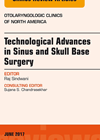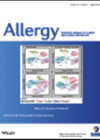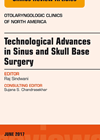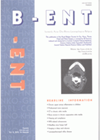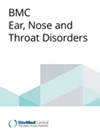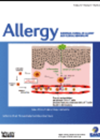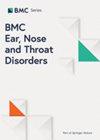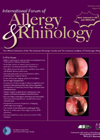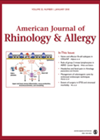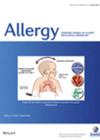
Journal Reviews
Stenting and sinus surgery
Stents are used in sinus surgery with the aim of maintaining patency of sinus cavity avoiding restenosis from inflammation or scarring. The exact indication for stenting in sinus surgery however is still debated. The authors discussed the potential role of...
Precision medicine in allergic rhinitis and chronic rhinosinusitis
Precision medicine (PM) with its ‘four Ps’ (personalised, predictive, preventive and participatory) is about appreciating differences between individuals when offering management options for health problems. Multiple groups interested in rhinology such as EPOS and ARIA supported a review of the...
A review of topical treatments for chronic rhinosinusitis
Topical nasal treatment is considered the mainstay treatment for chronic rhinosinusitis (CRS). The authors reviewed the effectiveness of saline irrigation, topical corticosteroids, topical antibiotics and topical antifungals in the treatment of CRS. Large volume saline irrigation was found to be...
A new biomarker for chronic rhinosinusitis
This Chinese study looked at the feasibility of periostin (usually found in bone and lung tissue) as a biomarker for chronic rhinosinusitis. They sampled ethmoid mucosa in 12 patients with chronic rhinosinusitis without nasal polyposis (CRSsNP) and 25 patients with...
Comparison of outcomes after septoplasty
For this prospective study, the authors assessed the quality of life (QoL) with the rhinosinusitis SNOT-20 (Sino-Nasal Outcome Test-20) questionnaire and the symptoms on a visual analogue scale (VAS) in all patients undergoing nasal septal surgery. The patients reported the...
Sinus surgery effects on asthma patients
Chronic rhinosinusitis (CRS) and asthma are related. The authors identified a gap in the literature and designed this study with a relatively large sample size of 86 patients. They included patients with comorbid asthma and CRS with or without polyps...
A review of endoscopic sinus surgery outcomes
This review discusses the outcome measures that may be considered in the assessment of patients with chronic rhinosinusitis (CRS) as well as the outcomes of endoscopic sinus surgery (ESS) published so far. The authors also discuss the role of peri-operative...
The effect of cocaine or adrenaline dressing during endoscopic sinus surgery
A randomised controlled study of 37 patients took place that underwent endoscopic sinus surgery for chronic rhinosinusitis and received adrenaline or cocaine-soaked patties. The study showed no difference in the mean surgical field scores between adrenaline and cocaine sides. Adequate...
Comparing patient and surgeon concerns in sinus surgery
This prospective observational study had a total of 180 patients undergoing endoscopic sinus surgery for chronic rhinosinusitis with or without polyposis. Data was analysed using descriptive statistics and analysis of variance. Subjects felt the greatest level of concern regarding potential...
Passive smoking and rhinosinusitis
One would expect that subjects exposed to more passive smoke would have a significantly increased level of rhinosinusitis. This study looked at a reasonable number of sinusitis and control subjects (404 and 165) using hair nicotine as an assessment of...
Is there a cause-and-effect relationship between allergic rhinitis and chronic rhinosinusitis?
This review examines the possible causative relationship between allergic rhinitis (AR) and chronic rhinosinusitis (CRS) that has long been proposed. Many observational and experimental studies exist, however no clear and definitive connection has been established. This is mainly due to...

